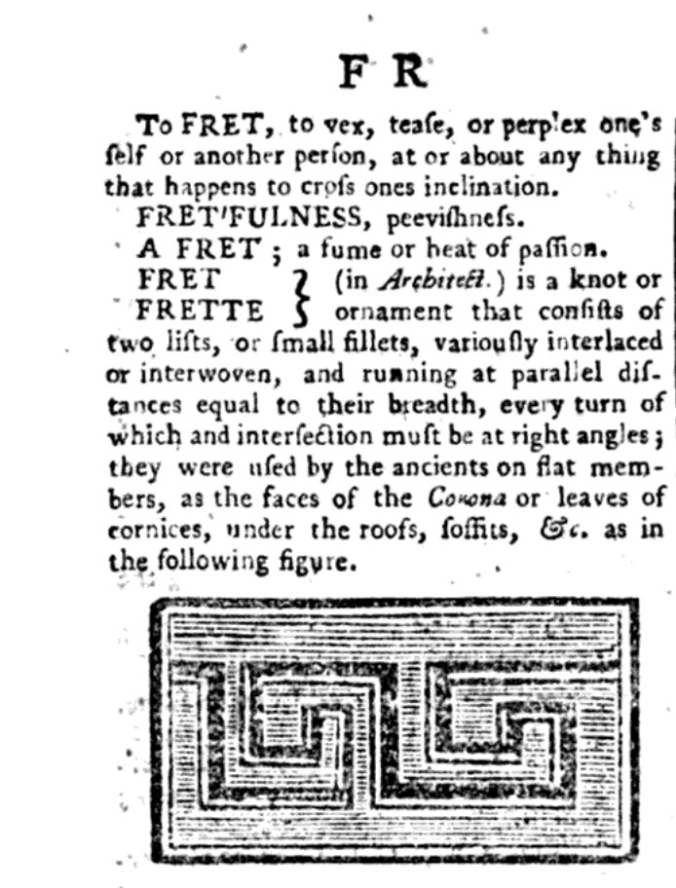
Detail of the Newhailes Libray chairs showing fretwork on the legs
Mackinnon Fine Furniture Collection
We are making good headway through the alphabet of decorative arts, focusing today on the letter F and the term fretwork. Fretwork is an ornamental design that is carved in low relief on a solid background or cut out with a fretsaw. The term fretwork derives from the French freter, meaning lattice.

Thomas Chippendale, Moldings and Fretwork for China Case
Metropolitan Museum of Art Collection
Fretwork appears on furniture, both in wood and metal, but it is also a term applied to certain architectural designs. Fretwork patterns were often geometric, and they often embodied a certain design aesthetic, such as Chinoiserie or Gothic trends. Thomas Chippendale is well known for using fretwork on his designs, as seen in the illustration above.

Excerpt from The Builder’s Dictionary by A. Betteseworth, C. Hitch, and S. Austen, 1734
Contemporary publications in Georgian England described the best way to incorporate fretwork. One such publication dates the use of ‘frettes’ back to antiquity, noting ‘they were used by the ancients on flat members, as the faces of the Corona or leaves of cornices, under the roofs, sossits, etc.’

The Newhailes Chairs: A Pair of George II Mahogany Armchairs with carved fretwork
Mackinnon Fine Furniture Collection
This magnificent pair of George II mahogany chairs attributed to William Vile feature prominent pierced and fretted square-section legs with intricate floral garlands wrapped around the front legs. These exceptional chairs, from Newhailes House, retain their original Aubusson tapestry covers.

A George III Mahogany Card Table with fretwork brackets and blind fretwork legs
Mackinnon Fine Furniture Collection
Whereas the above chairs feature open fretwork, this George III mahogany card table features two types of fretwork. The legs are carved with blind fretwork on a solid wooden background, and each leg is joined to the frieze with pierced fretwork brackets. The fretwork on this table features a distinct Gothic inspiration.

A George II Japanned Longcase Clock by William Bassett with gilded fretwork
Mackinnon Fine Furniture Collection
This impressive George II japanned long case clock by William Bassett features very intricate fretwork on the caddy top. The gilded frets are backed by a red silk, which adds a distinct contrast to the black and gilt chinoiserie decoration throughout the rest of the case.

A George III Mahogany Serpentine Chest on Chest with blind fretwork
Mackinnon Fine Furniture Collection
Our final piece today is one of our latest acquisitions that we have not shared yet on our website. It is an outstanding George III mahogany serpentine chest on chest with a blind fretwork frieze and chamfered blind fretwork corners. We are looking forward to sharing more about this piece with you in a few weeks–stay tuned!

Pingback: The ABCs of Decorative Arts: Gothic | The Source